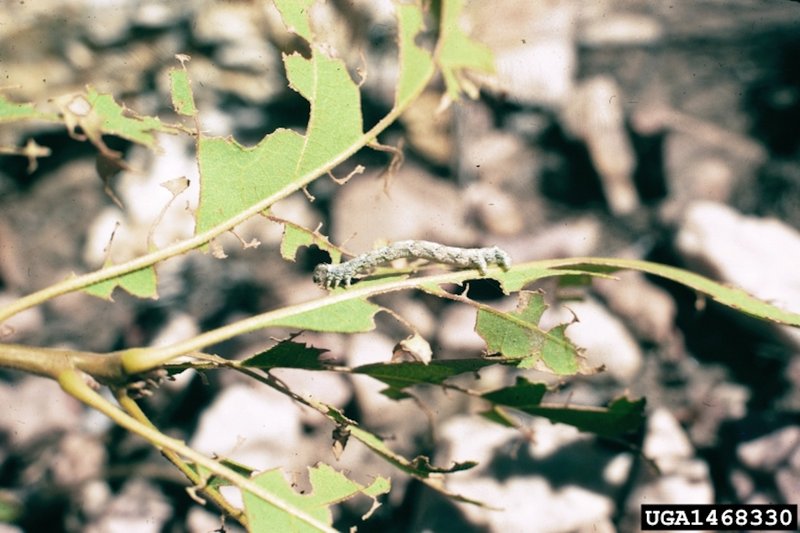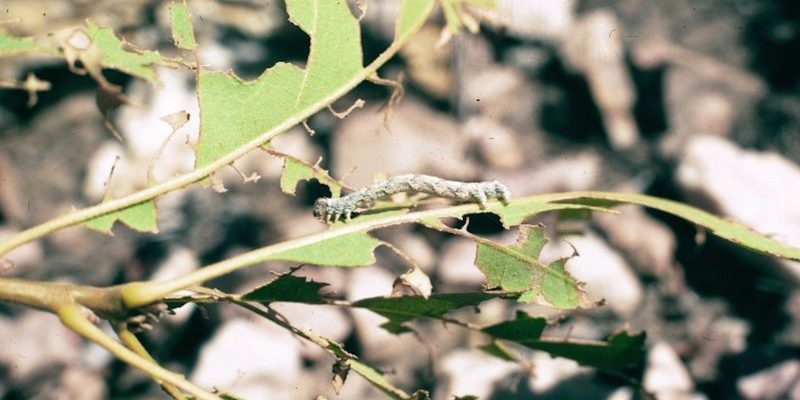
Inchworms, whose scientific name is Geometridae, are the larval stage of moths. As they munch on leaves, they can significantly impact the health of your trees and shrubs. With the right conditions, a few of these pests can quickly turn into a full-blown infestation. Understanding their behavior and life cycle can help you prevent damage and keep your plants thriving. So, grab a cup of coffee, and let’s dig into how inchworms defoliate trees and shrubs!
What Are Inchworms?
Inchworms are the larvae of certain types of moths, particularly those belonging to the Geometridae family. One defining feature of inchworms is their unique way of moving. They “inch” along by bringing their hind legs forward while keeping their front legs in place, creating that classic looping motion. This characteristic movement is what earns them their catchy name.
You might find these little guys in various shades of green or brown, allowing them to blend into their leafy surroundings. This camouflage is a survival tactic; it helps them hide from birds and other predators. But how do they affect your plants? Let’s explore that next.
Life Cycle of Inchworms
Understanding the life cycle of inchworms is crucial to grasping how they cause defoliation. The cycle starts when adult moths lay eggs on the leaves of trees and shrubs. Typically, these eggs hatch in late spring or early summer. Once the inchworms emerge, they’re ready to start munching.
During their larval stage, inchworms can be quite ravenous. They primarily feed on the foliage of trees and shrubs, and as they grow, they will molt several times. This means they shed their skin to make room for their growing bodies. A single inchworm can eat a surprising amount of foliage, leading to significant leaf loss if their population booms.
The last stage of their life cycle is the pupation stage, where they form cocoons. After a while, adult moths emerge to begin the process all over again. This cyclical pattern can lead to large outbreaks, especially under perfect conditions.
How Inchworms Defoliate Trees
Now, let’s get to the heart of the matter: how do these tiny creatures actually defoliate trees and shrubs? Inchworms primarily feed on the leaves, and depending on the size of the infestation, they can consume a large portion of a tree’s foliage in just a short time. Here’s how they do it:
- Feeding Habits: Inchworms often feed at night, leaving behind a trail of destruction that’s more noticeable during the day. They tend to munch on the edges of leaves, which can make the tree look ragged and unhealthy.
- Population Growth: If conditions are favorable—like ample food and warm temperatures—inchworm populations can explode. This rapid growth means that a small number of inchworms can quickly turn into a large invasion.
- Defoliation Impact: Losing leaves not only reduces the plant’s ability to photosynthesize but also weakens it overall. Trees can become stressed, making them more susceptible to disease and pests.
So, while they might seem harmless at first, inchworms can leave a lasting impact on your landscape.
Signs of Inchworm Infestation
Keeping an eye on your trees and shrubs is essential to catch inchworm infestations early. There are several signs you can look out for:
- Chewed Leaves: Look for leaves that have been nibbled on, especially those that appear to have irregular edges or holes.
- Silken Threads: Inchworms often create silken threads that can be seen hanging from branches. If you notice these, there’s a good chance inchworms are nearby.
- Presence of Inchworms: Lastly, check your plants for the inchworms themselves. They might be hard to spot at first, but their unique movement can give them away.
By identifying these signs, you can take action before the problem escalates.
Preventing Inchworm Infestations
Knowing how to prevent inchworm infestations can save your trees and shrubs from a lot of distress. Here are some effective strategies:
- Regular Inspections: Check your plants frequently. Early detection is key to preventing a larger infestation.
- Encourage Natural Predators: Birds and beneficial insects can help keep inchworm populations in check. Planting flowers that attract these predators can help your plants thrive.
- Use Organic Pesticides: If you’re facing a severe infestation, consider using organic pesticides. These are less harmful to the environment and can be effective against inchworms.
By taking these preventive measures, you can safeguard your greenery and promote a healthier garden.
Dealing with Existing Infestations
If you find yourself facing an inchworm infestation, don’t worry—there are ways to tackle it. Here’s how:
- Handpicking: For small infestations, handpicking the inchworms can be an efficient solution. Just wear gloves and drop them into a bucket of soapy water.
- Insecticidal Soap: Spraying the affected trees with insecticidal soap can help eliminate inchworms effectively. Make sure to cover all surfaces of the leaves.
- Neem Oil: This natural solution disrupts the life cycle of the inchworms. Spray it on your plants every few days for the best results.
Remember to follow the instructions on any product you use, and always test a small area first to ensure your plants can handle it.
The Bottom Line on Inchworms and Defoliation
Inchworms may be small, but their impact on trees and shrubs is anything but insignificant. Recognizing their life cycle, signs of infestation, and ways to prevent and deal with them can make all the difference. Keeping your plants healthy means staying vigilant and proactive.
Whether you’re a seasoned gardener or just starting out, understanding inchworms is part of nurturing your green space. The next time you see a munching inchworm, you’ll know exactly how to handle it. So, keep those trees and shrubs flourishing and enjoy all the beauty they bring to your life!

